Becca Adam, Ford’s product line manager for material and vehicle logistics IT, talks about the implementation of digital twin concepts for inbound material flow, integration of real-time location services into transport and yard management, and the focus on data management in logistics.
Three years ago, Ford began its technology transition to a product delivery model (PDO), where IT ownership is grouped by business function globally. Becca Adam’s Material and Vehicle Logistics IT team oversees inbound material and vehicle logistics systems, a function that is focused on building and delivering Ford’s vehicles.
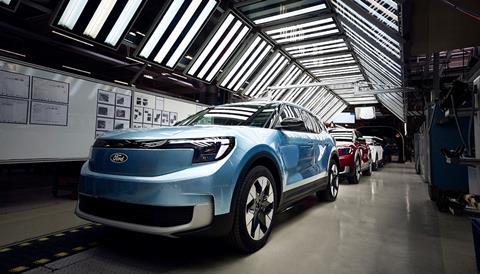
On the inbound side, the carmaker is applying digital twin technology and starting to see the benefits, according to Adam, something enabled by lower cost of the tags used to provide visibility on operations and the greater options in cost-efficient tag technology, including RFID and Bluetooth low energy tags. Adam’s team is also now trying to integrate this technology into Ford’s execution systems. The ability to finally apply tools to achieve greater visibility of operations is a game changer.
“When this technology was being introduced as the next big thing there were still a lot of elements to how value was going to be fully realised, that were missing,” says Adam. “We were talking about it as a visibility platform but now we have to find the value in execution. We’re doing a lot of work to make sure that our real time location services (RTLS) technology is integrated to our transport and yard management execution.”
Adam says the goal in her division is to make sure the team is getting the most out of the technology and the investment in using it while at the same time building flexible data pipelines from RTLS tags into its Google cloud platform.
Ford’s partnership with Google provides a simple process for streaming data into the cloud and distributing it throughout Ford’s internal systems as needed. With regard to logistics Adam says her team is looking at applications in true end-to-end control towers and using data to automate decision making with AI. However, what is also important is choosing the right use case to apply the technology.
We’re doing a lot of work to make sure that our real time location services (RTLS) technology is integrated to our transport and yard management execution – Becca Adam, Ford
Flexible data platforms
Ford has a lot of partnerships with digital technology providers, including Google, and is using those to focus on data management that can be consolidated in one place enabling greater flexibility and agility in use cases.
“If it’s today, it’s to enable control tower visibility,” says Adam. “Maybe tomorrow it’s to integrate that with risk management data, for example. We’re just trying to make sure we have a flexible enough data platform to be able to handle those things and that applies to material logistics.”
Ford maintains partnerships with third-party and fourth-party logistics providers (3PL/4PL) and it is important to close gaps in the data shared between those partners. That means using digital technology to support closer collaboration.
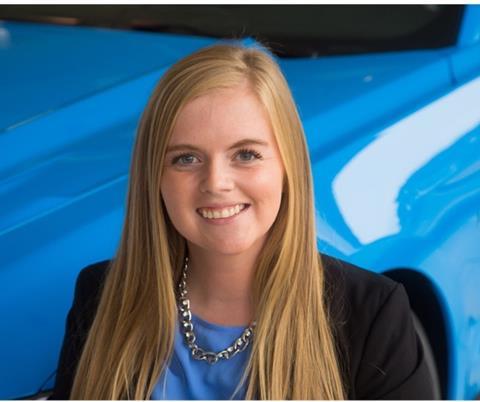
“When you start to consolidate all the data into one place, you obviously can identify network efficiencies in some cases that maybe hadn’t been looked at before,” says Adam. “We are seeing a lot of value and better decision making.”
An example is getting accurate part location at an inventory point closer to the plant at which it is required rather than one further away. With better consolidated data the Material and Vehicle Logistics IT team can make better decisions on efficient and timely supply. For Ford it is about integrating more advanced technologies into decision making, automating it and avoiding mistakes.
That improved visibility on parts depends on the market in which Ford is operating and the logistics partners present in it. Material and Vehicle Logistics IT looks at how to use its technology to communicate back to its logistics partners and share its execution systems. Adam points to more active initiatives on data sharing and while technological integration is continuing at Ford there are advances being made in its supply base.
Visibility at sea
One area of inbound supply in which digital technology is needed to provide greater visibility is ocean containerised parts shipments, something that continues to be a big challenge, according to Adam.
Since the Covid pandemic there has been a lot of investment in gaining visibility of parts in transit. There have also been mergers and acquisitions between providers of track-and-trace technology and maritime traffic companies. The Material and Vehicle Logistics IT team is still putting in a lot of manual effort to consolidate risk. It is using tagging technology and partner collaboration to gain visibility on containers. However, more work needs to be done to fill in gaps on risk and capacity management.
“We do have data sources that we’re pulling in to look at this but it’s still not the best data quality or not exactly what we want,” says Adam. “We want more understanding of how a congestion point like the one in Baltimore right now, for instance, affects ports in South America.”
While gaps remain in the information and a lot of time is still spent by the team on a daily basis identifying risk points in the network, Adam says that closing those gaps is rapidly improving.
Looking for accuracy in North America
In terms of outbound logistics, Ford is applying digital strategies in finished vehicle transport and yard management. The applications are different according to region says Adam. Ford has more ownership of its yard management and transport capabilities in Europe and in those countries managed by its International Markets Group (IMG). Ford works with third parties in Europe and IMG regions but its own teams run the transport and yard operations and use Ford IT systems.

“We have pretty robust yard management installations and track-and-trace transport management capabilities in our Europe and IMG regions that are one of the best options out there,” says Adam.
In North America, Ford has a different model for its yard and transport operations but is pushing for an end-to-end transport management concept. The carmaker has done benchmarking studies with other OEMs into that concept and found it lacking.
“In North America, there’s really not anybody who is running a true end-to-end transport management that we know of today,” says Adam. “We’ve seen bits and pieces. Some people do routing, some people do payment, but we haven’t seen a consolidated platform-based transport management implementation.”
That is something Ford is looking to modernise with its own technology and improve the vehicle delivery process, and there are a lot of advantages in doing so, according to Adam.
“We want to better utilise the telematics data in our vehicles as an example,” she says. “We want a better understanding of capacity management at our different handoff points and compounds throughout the United States.”
Ford is currently using telematics information for milestone tracking in vehicle logistics from trucking providers, and is also working with carriers to encourage more sharing.
Joined-up logistics
Adam points back to the RTLS technology Ford is using for inbound material tracking, something that is very relevant to vehicle logistics. There are tools to overcome the lack of vehicle connectivity and verify location, including Bluetooth, low energy tags for temporary attachment in the vehicle, or GPS installations. There are also lots of opportunities to use self-driving technology and automated yard management. Advances in self-driving vehicles also promises opportunity for logistics operations. [continues below]
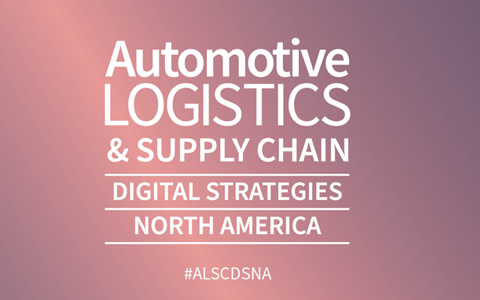
Becca Adam will speak about the integration of digital products to support inbound and vehicle logistics at the first Automotive Logistics and Supply Chain Digital Strategies North America conference in Nashville, Tennessee on June 26-27
“A lot of those types of technology will eventually service our vehicle logistics operations as vehicles become very smart, and I think this space is super exciting,” says Adam.
Digital technology also promises to transform what the execution systems look like, with connected vehicles able to support automated payments rather that a sole reliance on carrier messages to indicate that a delivery or task has been completed.
“There are a lot of great advances that will happen once we can actively converse with the vehicle to execute our operations,” says Adam. “There is a lot of interesting developments happening in that space and its picking up speed.”
A lot of those types of technology will eventually service our vehicle logistics operations as vehicles become very smart, and I think this space is super exciting – Becca Adam, Ford
Flexible schedules
Digital tools to transform finished vehicle logistics also promise to support tactics designed to mitigate capacity disruptions currently affecting all transport modes and at port and inland compounds.
Like other carmakers, Ford is facing capacity issues on certain routes and Adam says there need to be better conversations about scheduling flexibility and a more connected integrated network, using upstream systems to make better decisions about where vehicles are being sent.
Ford’s IT team is trying to provide more flexibility in routing, a significant issue that plant to dealer transport planning is extremely static, says Adam, thanks in part to a lack of SaaS investment. Vehicle allocation and network planning need to be more flexible, even when vehicles are in transit, and teams need to reroute or reallocate volumes with ease.
“We are working on flexibility for routing and while vehicles are in transit,” says Adam. “How do we give our operations people the tools to make changes on spot to keep units moving based on capacity challenges?”
What is exciting Adam in the medium term is the strategy that Ford’s Material and Vehicle Logistics IT team is putting together for vehicle logistics systems overall, one centred on vehicle connectivity and translating the gains made on inbound RTLS technology to the outbound delivery of vehicles. Adam says that is going to change how the team works.
“It’s having this connection to what’s in transit and how we’re rolling that up into the rest of our systems and data to provide value right across the ecosystem,” she says. “I don’t think it’s one specific thing or one specific tooling. It’s the integrated data strategy that’s most exciting from the IT perspective to get the most value out of our digital investment.”

























![Global[1]](https://d3n5uof8vony13.cloudfront.net/Pictures/web/a/d/s/global1_726550.svgz)




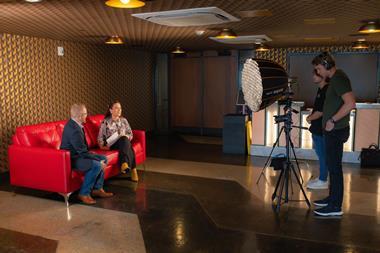

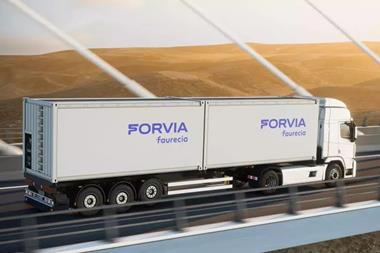
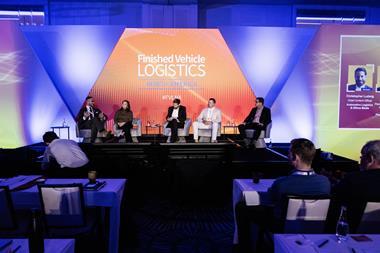





No comments yet